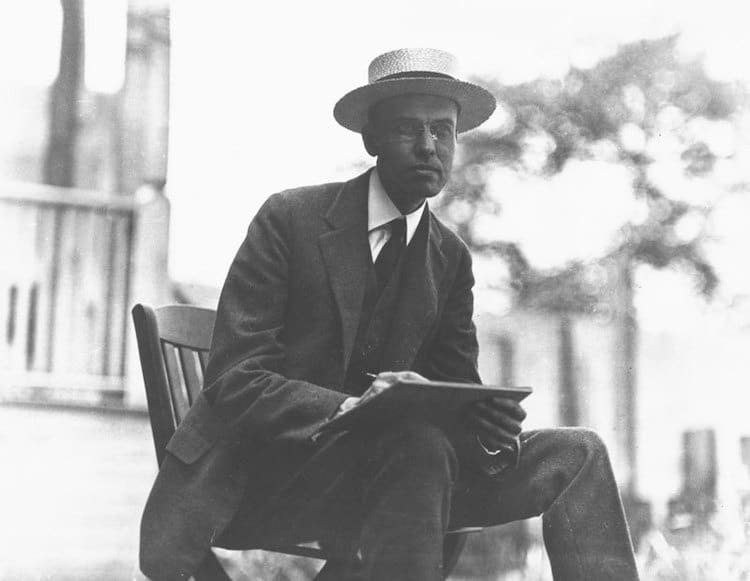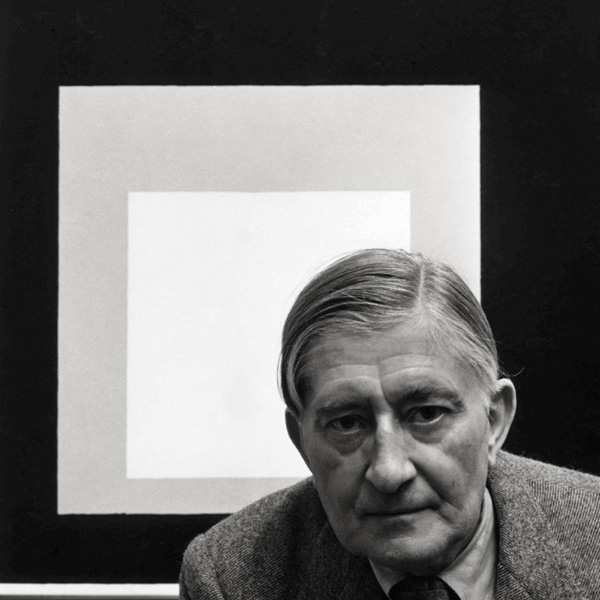
Edward Hopper, “Nighthawks,” 1942 (Photo: Wikimedia Commons, Public domain)
Celebrated as a key figure of 20th-century American art, lifelong New Yorker Edward Hopper held that “great art is the outward expression of an inner life in the artist, and this inner life will result in his personal vision of the world.” While this intimate artistic approach is apparent in many of Hopper's masterpieces, it is particularly apparent in Nighthawks, an iconic oil painting that has helped define the Modernist movement.
An embodiment of Hopper's knack for capturing the not-so-glamorous realities of metropolitan life, Nighthawks has been held in high regard since its completion in January of 1942. Today, it is housed in the Art Institute of Chicago, where it continues to captivate American and non-American audiences alike.
Here, we will learn more about this famous American artist and take a closer look at this beloved masterpiece.
Who was Edward Hopper?

Photo of Edward Hopper in Paris, 1907 (Photo: Wikimedia Commons, Public domain)
Edward Hopper (1882–1967) was a prominent American realist artist best known for his intimate oil paintings of city life in America. Born and raised in New York, he demonstrated proficiency in art from an early age and worked as a commercial illustrator for over 20 years to support himself while he practiced his painting. His initial success came from his etchings in the 1920s, all of which feature his interest in solitude and urban living. Hopper eventually found financial stability in his 40s, which allowed him to pursue painting full-time. His most famous works, like Nighthawks, were created during his late career.
Creating Nighthawks
Like most of Hopper's oil paintings, Nighthawks offers a glimpse into the artist's perceptions of modern American life—particularly, in New York City. Unlike his contemporaries who opted to capture the city's bright lights, buzzing atmosphere, and booming industry, however, Hopper instead focused on the prevalent yet underrepresented loneliness of its residents.
This melancholic motif is evident in many of the artist's earlier compositions, including Automat (1928), Night Windows (1929), and Sunday (1927).
Unlike many of his other depictions dealing with isolation, Nighthawks stars a group of subjects. The primary subject is not a lone figure, the scene still evokes a sense of solitude. Set late at night, the composition quietly presents a look at an unassuming neighborhood diner. The painting's ordinary stillness makes it easy for the viewer to place themselves into the scene; one can almost hear the hum of its harsh fluorescent lights and the clink of the customers' coffee mugs.
“Unconsciously, probably,” Hopper explained, “I was painting the loneliness of a large city.”
Subject Matter

Detail of ‘Nighthawks' (Photo: Wikimedia Commons, Public domain)
While its message is embedded in emotion, the iconography of Nighthawks is seemingly straightforward. Seen from outside the casual restaurant's large, wrap-around window, it shows three customers—two males and one female—seated at the counter. A single server interacts with two of the figures as he works behind the bar. Outside, the streets appear abandoned, implying the scene is set well into the night.
Setting the Scene
Hopper employed a very specific creative process when planning his paintings, and Nighthawks is no exception. Prior to touching his brush to the canvas, he would draft his ideas in a sketchbook. His wife, Josephine, or ‘Jo,' would often annotate these storyboard-like drawings (or even the finished pieces themselves), making the meaning and identities of his figurative subject matter even more clear.
For Nighthawks, she detailed the depiction's subject matter in her handwritten notes:
Night + brilliant interior of cheap restaurant. Bright items: cherry wood counter + tops of surrounding stools; light on metal tanks at rear right; brilliant streak of jade green tiles 3/4 across canvas–at base of glass of window curving at corner. Light walls, dull yellow ocre [sic] door into kitchen right.
Very good looking blond boy in white (coat, cap) inside counter. Girl in red blouse, brown hair eating sandwich. Man night hawk (beak) in dark suit, steel grey hat, black band, blue shirt (clean) holding cigarette. Other figure dark sinister back—at left. Light side walk outside pale greenish. Darkish red brick houses opposite. Sign across top of restaurant, dark–Phillies 5c cigar. Picture of cigar. Outside of shop dark, green. Note: bit of bright ceiling inside shop against dark of outside street—at edge of stretch of top of window.
As evident when comparing his preliminary sketches to Jo's description of the piece, little changed throughout Hopper's planning process.

Detail of ‘Nighthawks' (Photo: Wikimedia Commons, Public domain)
Nighthawks‘ Name
In addition to simply offering a detailed description of the work's iconography, Jo's commentary on the painting also provided the possible reasoning behind the painting's name—which was actually originally Night Hawks. Since she described one of the figures (the male with the cigarette) as a “man night hawk” with a “beak,” it's likely that the title is a literal reference to the bird-like qualities of the customer.

Detail of ‘Nighthawks' (Photo: Wikimedia Commons, Public domain)
Legacy

Photo: Steven Zucker (CC BY-NC-SA 2.0)
Today, Nighthawks is recognized as one of the most iconic works of American art. While it is unclear if it is based on an actual location (Hopper vaguely noted that it was “suggested by a restaurant on Greenwich Avenue where two streets meet”), many people view it as an apt amalgamation of the ordinary and often overlooked sites that make up a modern city.
Additionally, ample artists continue to employ Nighthawks as a muse within their own practice, whether they're reimagining it through a contemporary lens or reinterpreting it using unconventional mediums.
This article has been edited and updated.
Related Articles:
Incredible Composite Photographs Inspired by Edward Hopper
20+ Brilliant Quotes About Art From Famous Artists and Great Creative Minds























































































